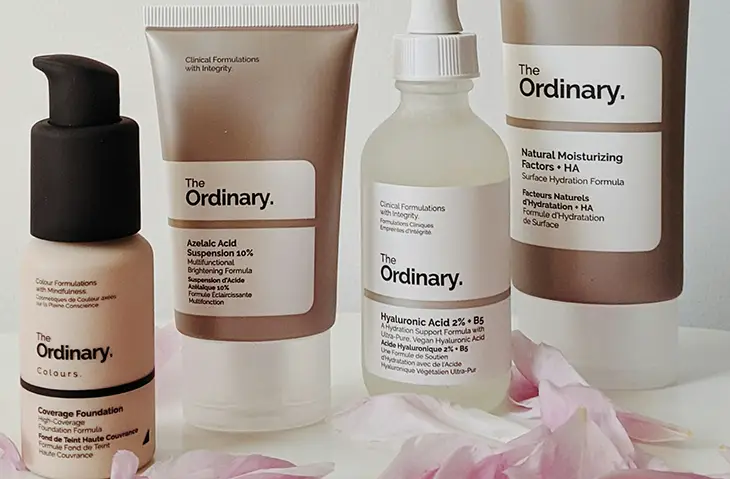What is Azelaic Acid?
When you think about powerful skincare ingredients, azelaic acid (AZA) may not immediately come to mind. If you struggle with acne, rosacea, or hyperpigmentation, you have to know that it’s one of the most effective options out there. Derived from yeast, AZA offers multiple benefits for various skin concerns, from soothing redness and evening skin tone to targeting stubborn breakouts.
What sets azelaic acid apart is its gentle nature, yet it’s tough enough to tackle a wide range of skin issues without being too harsh on your body.
How Does Azelaic Acid Work?
Azelaic acid is known for its ability to inhibit tyrosinase, the enzyme responsible for melanin production. This action makes it effective in reducing hyperpigmentation, like dark spots and melasma, by gradually lightening areas where melanin production has spiked.
Azelaic acid’s anti-inflammatory and antibacterial properties make it a go-to ingredient for acne and rosacea sufferers. AZA targets cutibacterium acnes and reduces keratinization, helping to prevent clogged pores and reduce breakouts. This dual-action approach not only helps clear up acne but also fades the pigmentation marks left behind.
Azelaic Acid for Acne and Rosacea
If you have acne or rosacea, AZA could be a game-changer for you. Clinical studies have shown the effectiveness of azelaic acid in reducing both inflammatory acne and rosacea symptoms. For acne, it helps by absorbing the growth of acne-causing bacteria and calming inflammation, resulting in clearer, less congested skin.
For those with rosacea, azelaic acid helps minimize the production of reactive oxygen species (ROS), which trigger flare-ups. Its soothing properties work to reduce the redness associated with rosacea, making it a suitable treatment for managing this condition.
Azelaic Acid for Hyperpigmentation
Hyperpigmentation can be challenging to fade, but azelaic acid offers a one size fits all solution. It helps lighten areas affected by post-inflammatory hyperpigmentation, melasma, and other forms of dark spots.
Unlike harsh ingredients like hydroquinone, AZA is gentle enough for long-term use, with studies showing it poses fewer risks.
How to Use Azelaic Acid
Azelaic acid is commonly available in creams and gels with concentrations between 10-20% on the label. If you’re new to using it, start with a lower concentration (something closer 10%) to minimize irritation, especially if you have sensitive skin.
Apply AZA after cleansing, just once or twice daily is all you might need. Introduce it gradually into your routine and do a patch test first to ensure it suits your skin. You can also pair azelaic acid with calming ingredients like niacinamide to enhance its effects while keeping your skin comfortable.
Since azelaic acid may increase your skin’s sensitivity to the sun, always follow with sunscreen (at least SPF 30, or even SPF 50+) to protect your skin and prevent further pigmentation.
Potential Side Effects to Watch Out For
While AZA is generally well-tolerated, some may experience mild discomfort when starting out. Tingling, redness, or dryness are common reactions, especially for sensitive skin types. If this occurs, try reducing the frequency of use or switching to a lower concentration to keep your skin in balance.
Sun exposure can also be more of a concern when using azelaic acid, so be diligent about applying sunscreen and limiting time in the sun to maintain your skin’s health.
Can I Use Azelaic Acid with Salicylic Acid?
Yes, azelaic acid and salicylic acid can be used together, but it’s important to introduce them carefully. Both are beneficial for acne-prone skin—azelaic acid targets inflammation and pigmentation, while salicylic acid exfoliates and clears out pores. To avoid overloading the skin, try using them on different days by staggering them, or apply salicylic acid first thing in the morning and AZA at nighttime.
Can I Use Azelaic Acid with Vitamin C?
Yes, combining azelaic acid with vitamin C can be highly effective for brightening skin and tackling hyperpigmentation. Vitamin C helps protect the skin from free radicals and evens out skin tone, while azelaic acid calms inflammation and fades dark spots. For optimal results, apply vitamin C in the morning and azelaic acid in the evening, or alternate their use depending on your skin’s needs.
Can I Use Azelaic Acid with Retinol?
Yes, azelaic acid can be paired with retinol, but it’s wise to introduce both ingredients slowly. Retinol speeds up skin cell turnover, while azelaic acid reduces pigmentation and redness. Start by using them on alternate nights or apply it during the day and retinol at night. This approach will help your skin adjust while minimizing the chances of sensitivity. Finish your routine with a nourishing moisturizer and sunscreen to keep your skin protected.
References:
AcneAdvocate is a participant in the Amazon affiliate advertising program and this post may contain affiliate links, which means we may earn a commission or fees if you make a purchase via those links.





